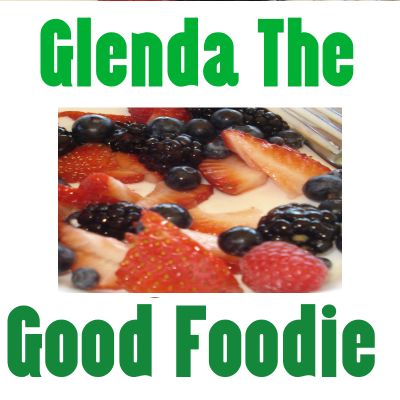1300 views for March 2013!!! Thank you for stopping by and looking around Glenda the Good Foodie Blog!!
Month: March 2013
Egg Free Cookies
Egg Free Cookies
If you are not allergic to nuts you can use almond butter
use flax seed meal as egg substitute. 1 TBLSP and water 4 TBSP of water stir, let sit for 5 minutes
till mixture is egg like consistent.
1 cup raw almond butter
1/4 cup raw honey (you can use slightly more or less based on your preference)
1 egg (flax seed meal mixture)
1/2 tsp baking soda
1/2 tsp salt
1/4 cup Enjoy Life chips (more/less if you like)
1. Pre-heat oven to 350 Degrees F. Line cookie sheet with non-stick foil.
2. In a bowl, whisk all ingredients (except the chips) together. When combined, gently fold in chips to incorporate.
3. Using a regular spoon, spoon about 2 TBSP worth of batter onto the cookie sheet, about 1.5 inches about.
4. Bake for 8-10 minutes (until just slightly firm). Remove from oven and let cool for another 10 minutes on the cookie sheet.
.
5. Remove cookies from sheet and allow to finish cooling on a cookie rack. Store in an airtight container.
E is for Eggplant
Eggplant Is Royalty In The Garden
One of the most unique looking vegetables in the produce section, eggplant is a wonder of nature and is incredibly delicious in a number of dishes. The deep purple color gives it that ‘royalty’ look and is difficult to miss among the reds, yellows, and greens of a typical produce market. Eggplant catches our eye first, and gives us a great reason to walk over, pick it up and take it home for dinner. But what is it and what do you do with it when you get it home? Let’s take a deeper look at this versatile vegetable.
What is It?
Eggplants belong to the nightshade family of vegetables. The reason they are called nightshade is because they do not fare well in direct sunlight. Some of their family members also include tomatoes, sweet peppers, and potatoes. Eggplants grow in a manner much like tomatoes, hanging from the vines of a plant that grows several feet in height and has big leaves to protect the vegetable from the sun.
There are hundreds of varieties of eggplant, and while the different varieties do range slightly in taste and texture, one can generally describe the flavor as having a pleasant deep and musty taste and spongy texture. They are available in your local market year-round, but they are at their peak between August and October. Check your farmers markets for the best and freshest eggplants if you can.
History
Thomas Jefferson, who used eggplant in many of his experiments, is credited with introducing eggplant to North America. Before then, the ancient ancestors of eggplant grew wild in India and were first cultivated in China in the 5th century B.C. For centuries after its introduction into Europe, eggplant was used more as a decorative garden plant than as a food.
Although it has a long and rich history, eggplant did not always top the list of favorite veggies. Before domestication and cross-pollination, eggplant was extremely bitter and had to be cooked very well to even begin to dilute the taste. The majority of eggplant we see in stores today is grown in Florida since the weather stays mild most of the year. But New Jersey, during the summer months, is also a major supplier of fresh eggplant to produce markets.
Health Benefits
Eggplants are extremely versatile in the kitchen and they should become an integral part of our diets. Studies have been done on eggplant to find their deep purple skin contains an anthocyanin phytonutrient called nasunin. Nasunin is a water-soluble antioxidant (which means that it breaks down easiest when in water) and free radical scavenger that has been shown to protect cell membranes from damage. This becomes especially important in brain cell membranes which are mostly made up of lipids and are responsible for protecting the cell from free radicals and letting nutrients in and wastes out.
Fun Fact
Another name for eggplant is Aubergine, which describes the rich purple color. You may also hear eggplant referred to as a fruit, which is accurate since that is its botanical classification. Even more confusing is eggplant is also botanically classified as a berry. And, if that’s not strange enough, the seeds you see when you scoop out the inner pulp are edible, but you may not want to when you hear they contain nicotinoid alkaloids. Sound familiar? Eggplant is closely related to tobacco.
How to Eat
It is important to use a stainless steel knife when cutting eggplant to avoid the nasty brown look from oxidization when using a carbon steel knife. This browning or oxidization happens fast, so only cut it when you’re going to prepare it. While eggplant can be eaten with the skin on or off, it is important to “sweat” the eggplant by using salt. This will draw out some of the water and, surprisingly, a lot of the bitter taste that goes with it.
Once you have the eggplant sliced and sweated, you can add it to just about any dish you want. A classic dish of Eggplant Parmesan is always a family pleaser. A great middle eastern snack is babaganoush which is pureed roasted eggplant. Serve it with some toasted pita chips and you have one incredibly yummy snack.
If you haven’t tried eggplant yet, now is the time. That gorgeous color is enough to make you fall in love at first sight. But, the versatility will keep you a fan for life.
Here is a simple eggplant recipe




